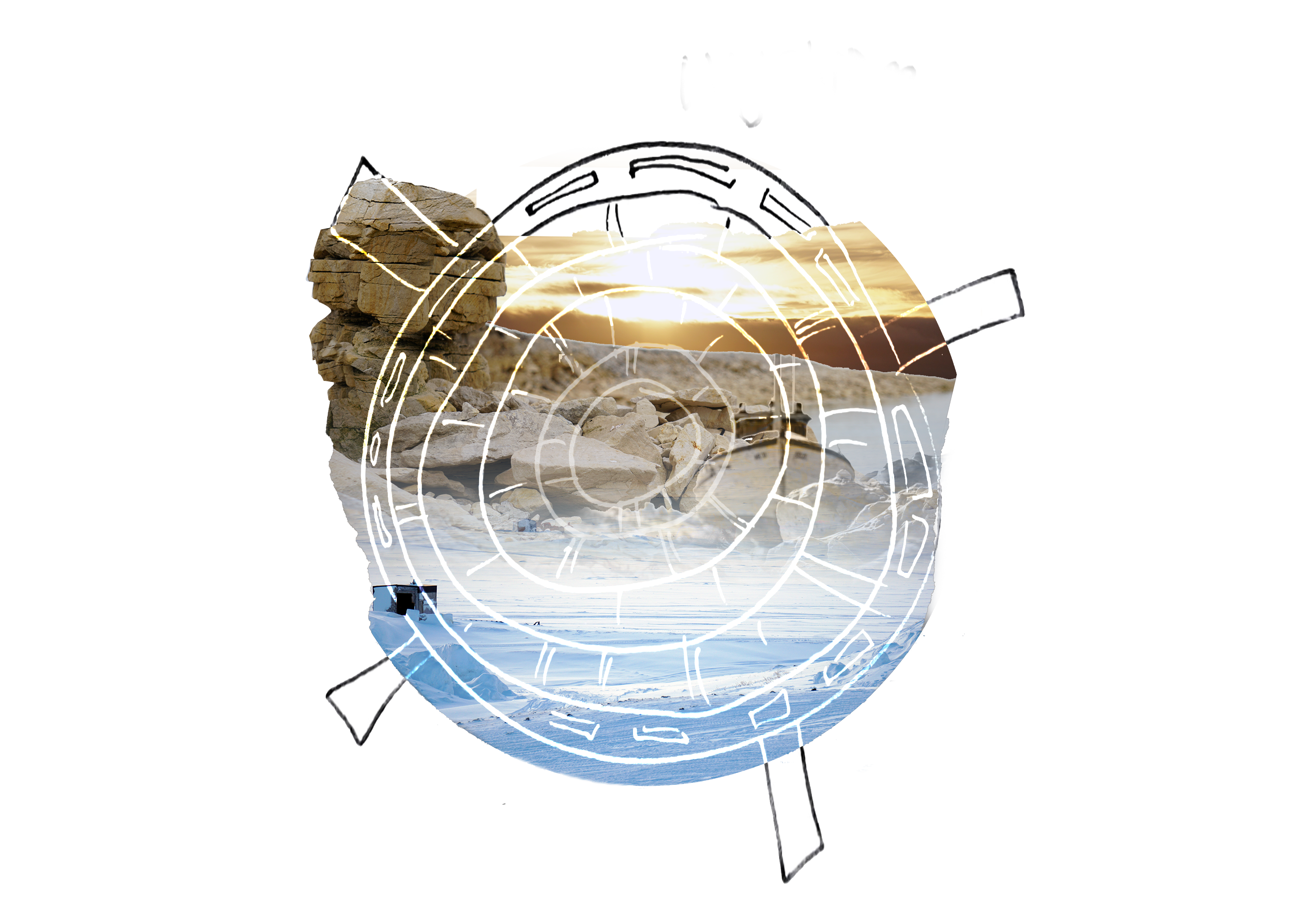The Land: Difference between revisions
No edit summary |
No edit summary |
||
| Line 9: | Line 9: | ||
Take a walk</div> | Take a walk</div> | ||
<span class="return to cut 3 link" data-page-title="Wayfaring_the_BW_project" data-section-id="6" data-encounter-type="return">[[Wayfaring the BW project#Meetings Spring 2022 Gjoa Haven|Return to Cut 3: Gjoa Haven | <span class="return to cut 3 link" data-page-title="Wayfaring_the_BW_project" data-section-id="6" data-encounter-type="return">[[Wayfaring the BW project#Meetings Spring 2022 Gjoa Haven|Return to Cut 3: Meetings Spring 2022 Gjoa Haven]]</span> | ||
Revision as of 13:45, 23 January 2025

Donna Haraway argues, inspired by Ursula le Guin (1986), that the kind of stories we need telling in these times are not those of the Antropos. Not those of the capitalized Human in History and all the weaponized tools such a Human might carry, but those of the netbag, the basket, or any other concave shape. Such a netbag, or even a pair of cupped hands enables carrying things along, and receiving and giving away. Such exchange suggests ongoing stories of becoming with-; a collective making and unmaking of the world with ‘companion species’ as ‘kin’ (Haraway, 2003 ; 2016). These stories acknowledge messy, earthbound, multispecies entanglements, rather than man-making tales of the single hero.
Whether collecting fish samples, or camping out next to a Weir. Both events provide knowledge. Both kinds of knowledges are needed for sustainable wildlife conservation.
